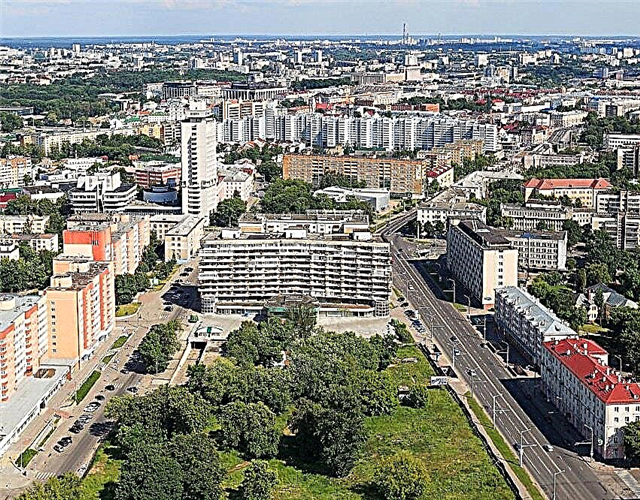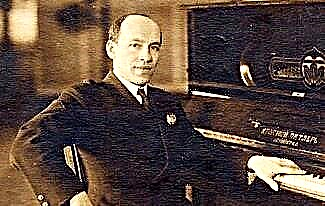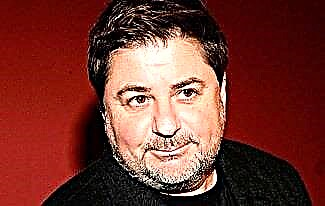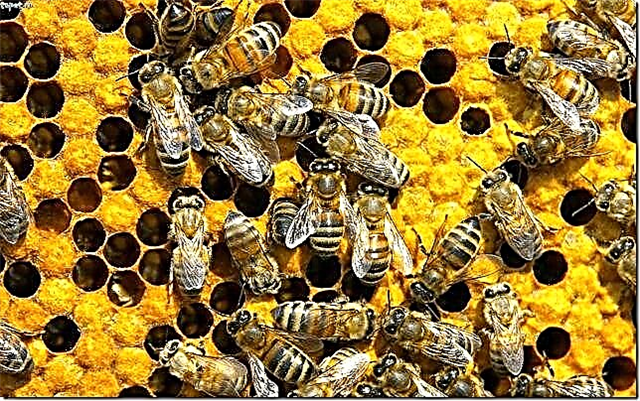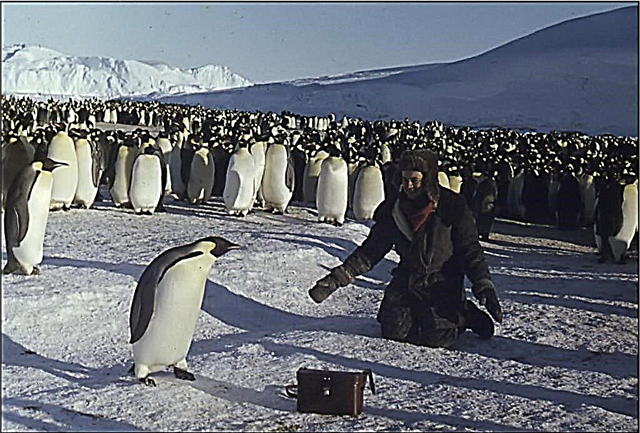Judging by modern life, one might think that coffee has accompanied a person since time immemorial prehistoric times. Coffee is brewed at home and at work and served at street stalls and high-end restaurants. Almost no advertising block on television is complete without a video about an invigorating frothy drink. It seems that it has always been like this - no one needs to explain what coffee is.
But in fact, the European tradition of drinking coffee, according to medieval evidence, barely turned 400 years old - the first cup of this drink was brewed in Italy in 1620. The coffee is much younger, so to speak, brought from America, tobacco, potatoes, tomatoes and corn. Perhaps tea, the main rival of coffee, appeared in Europe a little later. During this time, coffee has become a must-have product for hundreds of millions of people. It is estimated that at least 500 million people start their day with a cup of coffee.
Coffee is made from coffee beans, which are the seeds of the fruit of the coffee trees. After fairly simple procedures - washing, drying and roasting - the grains are ground into powder. It is this powder, which contains useful substances and trace elements, and is brewed to obtain an invigorating drink. The development of technology has made it possible to produce instant coffee that does not require long and painstaking preparation. And the popularity and availability of coffee, coupled with human entrepreneurship, have created hundreds of different varieties of this drink.
1. Biologists count in the wild more than 90 species of coffee trees, but only two “domesticated” of them are of commercial importance: Arabica and Robusta. All other types do not even account for 2% of the total volume of coffee production. In turn, among the elite varieties, Arabica prevails - it is produced twice as much as Robusta. To simplify it as much as possible, we can say that arabica is, in fact, the taste and aroma of coffee, robusta is the hardness and bitterness of the drink. Any ground coffee on store shelves is a mixture of Arabica and Robusta.
2. Producing countries (there are 43) and coffee importers (33) are united in the International Coffee Organization (ICO). ICO member states control 98% of coffee production and 67% of consumption. The difference in numbers is explained by the fact that the ICO does not include the United States and China, which consume significant volumes of coffee. Despite the fairly high level of representation, ICO, unlike the oil OPEC, has no impact on either production or coffee prices. The organization is a hybrid of a statistical office and a mailing service.
3. Coffee came to Europe in the XVII and was almost immediately recognized first by the noble class, and then by simpler people. However, the authorities, both secular and spiritual, treated the invigorating drink very badly. Kings and popes, sultans and dukes, burgomasters and city councils took up arms against coffee. For drinking coffee, they were fined, subjected to corporal punishment, property was confiscated and even executed. Nevertheless, with the passage of time, always and everywhere, it turned out that coffee, despite the prohibitions and censures, has become one of the most popular drinks. By and large, the only exceptions are Great Britain and Turkey, which still drink much more tea than coffee.
4. Just as the volumes of oil are measured in at first incomprehensible barrels, the volumes of coffee are measured in bags (bags) - coffee beans are traditionally packed in bags weighing 60 kg. That is, the message that in recent years the world production of coffee has fluctuated in the region of 167 - 168 million bags, means that it is produced about 10 million tons.
5. “Tipping”, in fact, would be more correct to call “coffee”. The tradition of appeasing a waiter with money appeared in English coffee houses in the 18th century. There were hundreds of coffee shops back then, and still, during peak hours, they could not cope with the influx of customers. In London, separate tables began to appear in coffee houses where coffee could be obtained without queuing. These tables had tin beer mugs with the words “To insure prompt service” on them. A man threw a coin into a mug, it rang, and the waiter carried coffee to this table, forcing ordinary customers to lick their lips. So the waiters earned themselves the right to an additional reward, nicknamed, by the inscription on the mug, TIPS. In Russia, then coffee was drunk only in the royal palace, so "extra money" sex or waiter began to be called "tip". And in England itself, they began to drink tea in cafes only a century later.

6. Rwanda is notorious as an African country, where more than a million people were killed in 1994 genocide on ethnic grounds. But gradually the Rwandans are overcoming the consequences of that catastrophe and rebuilding the economy, the most important part of which is coffee. 2/3 of Rwandan exports are coffee. A typical African resource-based economy that depends solely on the price of its main commodity, many will think. But with regard to Rwanda, this view is wrong. Over the past 20 years, the authorities of this country have actively encouraged the improvement of the quality of coffee beans. The best producers are given elite varieties of seedlings free of charge. They are rewarded with bicycles and other luxury items in this poorest country. Peasants do not hand over coffee beans to buyers, but to state washing stations (coffee beans are washed in several stages, and this is a very difficult task). As a result, it turns out that if the average world coffee prices have fallen by half over the past 20 years, then the purchase price of Rwandan coffee has doubled over the same time. It is still small relative to other leading manufacturers, but this, on the other hand, means there is room for growth.
7.From 1771 to 1792, Sweden was ruled by King Gustav III, a cousin of Catherine II. The monarch was a very enlightened man, the Swedes call him “The Last Great King”. He introduced freedom of speech and religion in Sweden, patronized the arts and sciences. He attacked Russia - what a great Swedish king without an attack on Russia? But even then he showed his rationality - having formally won the first battle, he quickly concluded peace and a defensive alliance with his cousin. But as you know, there is a hole in the old woman. For all his rationality, Gustav III, for some reason, hated tea and coffee and fought with them in every possible way. And the aristocrats were already addicted to overseas drinks and did not want to give them up, despite fines and punishments. Then Gustav III went on a propaganda move: he ordered an experiment to be carried out on two twins who were sentenced to death. The brothers were spared their lives in exchange for the obligation to drink three cups a day: one tea, the other coffee. The ideal ending of the experiment for the king was the quick death of the first “coffee brother” (Gustav III hated coffee more), then his brother, who was sentenced to tea. But the first to die were the doctors overseeing the "clinical trial." Then it was Gustav III's turn, however, the purity of the experiment was violated - the king was shot. And the brothers continued to consume tea and coffee. The first of them died at 83 years old, the second lived even longer.
8. In Ethiopia, which, like many other African countries, is not particularly zealous in the field of sanitation and hygiene, coffee is the first and almost the only natural remedy for stomach problems in case of poisoning. Moreover, they do not drink coffee for treatment. Coarsely ground coffee is stirred with honey and the resulting mixture is eaten with a spoon. The proportions of the blend vary from region to region, but usually it is 1 part coffee to 2 parts honey.
9. It is often said that although caffeine is named after coffee, tea leaves contain more caffeine than coffee beans. The continuation of this statement is either deliberately silent or drowned in surprise. This continuation is much more important than the first statement: there is at least one and a half times more caffeine in a cup of coffee than in a similar cup of tea. The thing is that the coffee powder used to brew this drink is much heavier than dried tea leaves, so the amount of caffeine is higher.
10. In the city of Sao Paulo, Brazil, there is a monument to the coffee tree. No wonder - coffee is produced in Brazil the most in the world, and coffee exports bring the country 12% of all foreign trade income. There is also a coffee monument, only less obvious, on the French island of Martinique. In fact, it was installed in honor of Captain Gabriel de Kiele. This gallant husband did not become famous at all on the battlefield or in a naval battle. In 1723, de Kiele stole the only coffee tree from the greenhouse of the Paris Botanical Gardens and transported it to Martinique. The local planters put the only seedling into operation, and de Kiele was rewarded with a monument. True, the French monopoly on coffee in South America, no matter how supported it by threats of the death penalty, did not last long. Here, too, it was not without the military. Portuguese Lieutenant Colonel Francisco de Melo Palette received coffee tree seedlings in a bouquet presented to him by his beloved (according to rumors, it was almost the wife of the French governor). This is how coffee appeared in Brazil, but Martinique is not growing it now - it is unprofitable because of the competition with Brazil.
11. A coffee tree lives on average for about 50 years, but actively bears fruit no more than 15. Therefore, on coffee plantations an integral part of the work is the constant planting of new trees. They are grown in three steps. First, the coffee beans are placed in a relatively small layer of damp sand on a fine mesh. A coffee bean, by the way, does not germinate like most other beans - it first forms a root system, and then this system pushes the stem with the grain on top to the soil surface. When the sprout reaches several centimeters in height, a thin outer shell flies off the grain. The sprout is transplanted into an individual pot with a mixture of soil and fertilizer. And only when the plant gets stronger, it is planted in open ground, where it will become a full-fledged tree.

12. On the Indonesian island of Sumatra, a very unusual type of coffee is produced. It's called “Kopi Luwac”. Locals noticed that representatives of one of the gopher species, “kopi musang”, are very fond of eating the fruits of the coffee tree. They swallow the fruit whole, but only digest the soft part (the fruits of the coffee tree are similar in structure to cherries, coffee beans are bones). And the actual coffee bean in the stomach and further internal organs of the animal undergoes specific fermentation. The drink, brewed from such grains, has, as the producers assure, a special unique taste. “Kopi Luwac” sells superbly, and Indonesians only regret that for some reason gophers do not eat coffee fruits in captivity, and their coffee costs only about $ 700 per kilogram. Canadian Blake Dinkin, who grows coffee in northern Thailand, feeds berries to elephants and, as they exit the digestive tract of the largest animals on land, receives products worth more than $ 1,000 per kilogram. Dinkin has other difficulties - in order to get a kilogram of especially fermented beans, you need to feed an elephant 30 - 40 kg of coffee fruits.
13. About a third of the world's coffee is produced in Brazil, this country is the absolute leader - in 2017, production amounted to almost 53 million bags. Much less grains are grown in Vietnam (30 million bags), however, due to the relatively low domestic consumption in terms of exports, Vietnam's gap is very small. In third place is Colombia, which grows almost half as much coffee as Vietnam. But Colombians take quality - their Arabica is sold at an average of $ 1.26 per pound (0.45 kg). For Vietnamese robusta, they pay only $ 0.8-0.9.The most expensive coffee is produced in highland Bolivia - an average of $ 4.72 is paid for a pound of Bolivian coffee.In Jamaica, a pound of coffee costs $ 3. Cubans get $ 2.36 for their coffee. ./lb.
14. Contrary to the image created by the media and Hollywood, Colombia is not only endless coca plantations and drug mafia. The country has a very strong position of coffee producers, and Colombian Arabica is considered the highest quality variety in the world. In Colombia, the National Coffee Park has been created, in which there is a whole town of attractions - “Parque del Cafe“. This is not only cable cars, roller coasters and other familiar entertainment. The park has a huge interactive museum that illustrates all stages of coffee production from planting trees to brewing a drink.
15. In the most expensive hotel in the world "Emirates Palace" (Abu Dhabi, United Arab Emirates) the room rate includes coffee, which is served with marzipan, linen napkin and a bottle of expensive mineral water. All this is placed on a silver tray covered with rose petals. The lady also gets a whole rose for coffee. For an extra $ 25, you can get a cup of coffee that will be sprinkled with the finest gold dust.
16. Many recipes for making coffee drinks appeared long ago, but “Irish Coffee” can be considered relatively young. He appeared during the Second World War in a restaurant in the airport of the Irish city of Limerick. One of the flights to America did not reach Newfoundland, Canada and turned back. The passengers were terribly chilled during the 5 hours of flight, and the chef of the restaurant at the airport decided that they would warm up faster if a portion of whiskey was added to the coffee with cream. There weren't enough cups - whiskey glasses were used. Travelers really got warm quickly, and coffee with sugar, whiskey and whipped cream just as quickly gained worldwide popularity. And they serve it, according to tradition, as in a glass - in a bowl without handles.
17. According to the principle of production, instant coffee can be very clearly divided into two categories: “hot” and “cold”. The technology for producing instant coffee of the first category implies that insoluble substances are removed from the coffee powder by exposure to hot steam. The “cold” technology of instant coffee production is based on deep freezing. It is more efficient, but it also requires more energy, so instant coffee obtained by freezing is always more expensive. But in such instant coffee, more nutrients remain.
18. There is an opinion that after Peter I defeated the Swedish king Charles XII, the Swedes became so wiser that they became a neutral country, began to grow rich quickly, and by the twentieth century had become the most social state in the world. In fact, even after Charles XII, the Swedes were involved in various adventures, and only internal contradictions made Sweden a peaceful state. But the Swedes owe their acquaintance with coffee to the Great Northern War. Fleeing from Peter, Karl XII ran to Turkey, where he got acquainted with coffee. This is how the oriental drink got to Sweden. Now Swedes consume 11 - 12 kilograms of coffee per capita per year, periodically changing their leadership in this indicator with other Scandinavian countries. For comparison: in Russia, coffee consumption is about 1.5 kg per capita per year.
19. Since 2000, professional coffee makers - baristas - have been holding their own World Cup. Despite its youth, the competition has already acquired a large number of categories, sections and types, a considerable number of judges and officials, and two coffee federations are fed. Competition in its main form - the actual preparation of coffee - consists in the artistic preparation of three different drinks. Two of them are a mandatory program, the third is a personal choice or an invention of the barista. Competitors can arrange their work as they please.There were times when the barista worked to the accompaniment of a specially invited string quartet or accompanied by dancers. Only judges taste the prepared drinks. But their assessment includes not only taste, but also the technique of cooking, the beauty of the design of the tray with cups, etc. - only about 100 criteria.
20. In a debate about whether coffee is good or bad, only one truth can be made clear: both are stupid. Even if we do not take into account the axiom of Paracelsus "everything is poison and everything is a medicine, the matter is in the dose." To determine the harm or usefulness of coffee, you will have to take into account a huge number of injections, and even some of them are still unknown to science. More than 200 different components have already been isolated in coffee beans, and this is far from the limit. On the other hand, the body of each person is individual, and the reactions of different organisms to the same substance are just as unique. Honore de Balzac had a solid build, while Voltaire was rather thin. Both drank 50 cups of coffee a day. Moreover, it was far from our usual coffee, but the strongest drink of several varieties. As a result, Balzac barely crossed the 50-year mark, completely undermined his health and died from a minor wound. Voltaire lived to be 84, joking that coffee was a damn slow poison, and died of prostate cancer.

